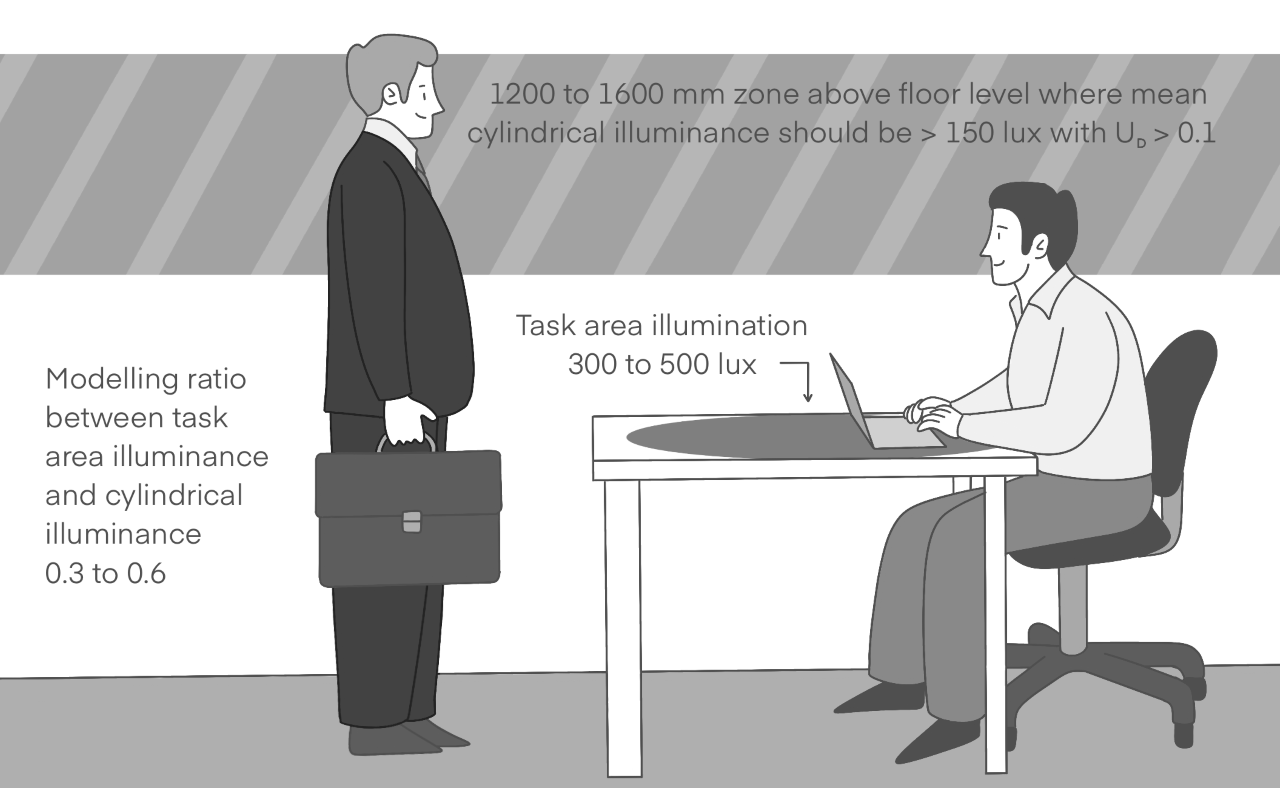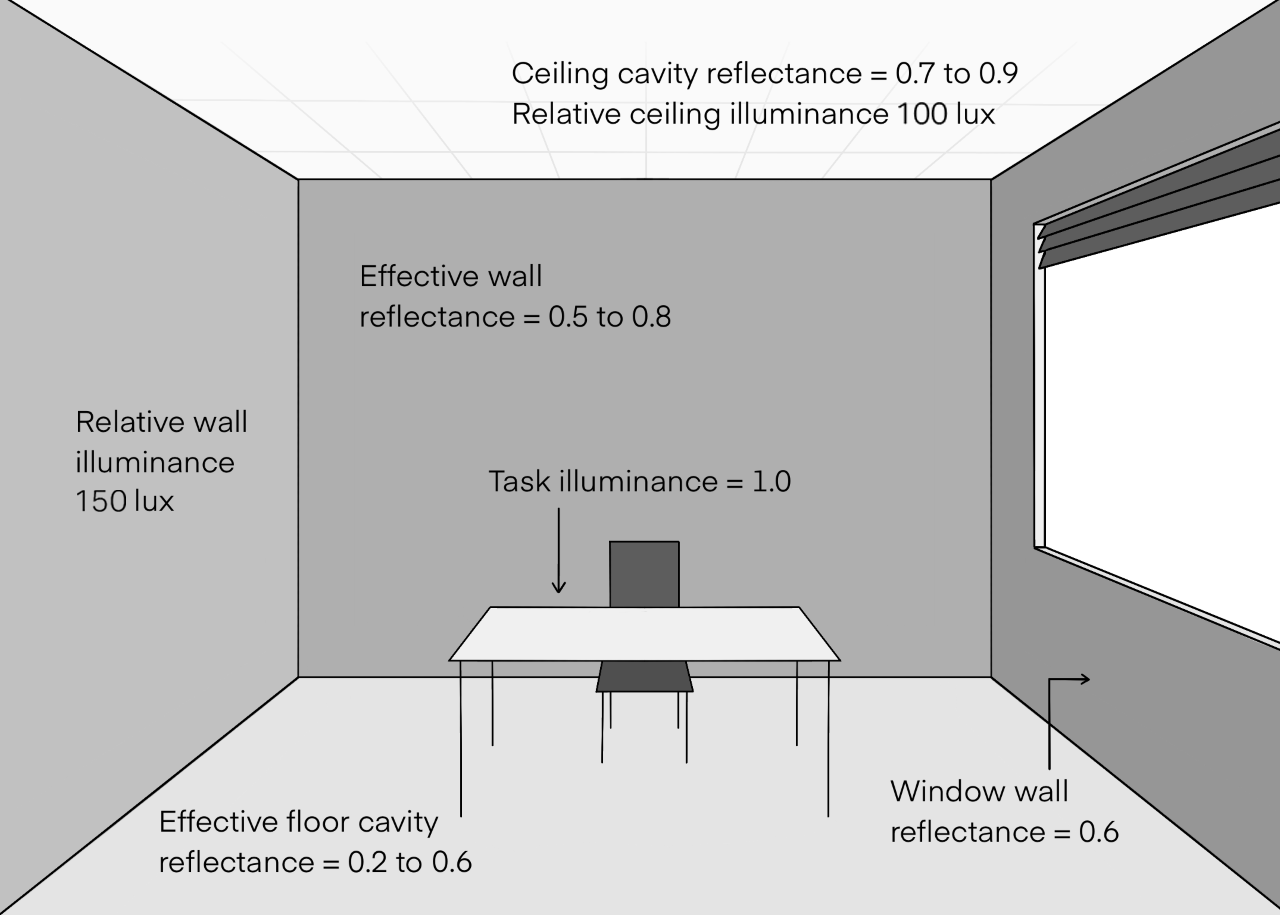Workplace Illuminance levels.
The BS EN 12464-1: 2021 has introduced the use of Context Modifiers to ensure appropriate lighting levels are better matched to the specific nature of each space and its occupants.
Modifiers that may increase illumination levels:
-
Visual work is critical
-
Errors are too costly to rectify
-
Accuracy, higher productivity or increased concentration is of great importance
-
Task details are of unusually small size or low contrast
-
The task is undertaken for an unusually long time
-
The task area has a low daylight provision
-
The visual capacity of the work is below normal
The scale of illuminance (lux)
In accordance with SLL Code for Lighting 2022, these recommended lighting levels are recognised as a benchmark in lighting design:
20 - 30 - 50 - 75 - 100 - 150 - 200 - 300 - 500 - 750 - 1000 - 1500 - 2000 - 3000 - 5000
Typically, lighting design for task areas in offices will be either:
300 lux for mainly screen- based tasks
500 lux for mainly paper based tasks
Horizontal or cylindrical illuminance?
Traditionally, lighting design in offices has focused on the working surface with considerations given to areas around that surface. As the working practices have changed dramatically and we now rely on online meetings and video conferencing, the need to address the illumination of a person’s face as their working area is important. BS EN 12464-1:2021 introduces the need to consider the vertical element, particularly at face height. (1.2m for sitting and 1.6m for standing)

Modelling ratio is a term used to refer to the balance between diffuse and direct lighting. Completely diffuse lighting can look bland. A direct lighting scheme with no diffuse element can produce strong contrast. Having a mixture of the types will help define shapes, colours and textures. An acceptable modelling ratio for office environments is considered to be 0.3 to 0.6 (or 30% to 60% of the horizontal illuminance value).
Illumination of walls and ceilings
It is a common misconception that lighting in an office only needs to be applied to the task area. But working on a computer, people need to take regular breaks to avoid eye strain. The long view within their office should be illuminated similar to that of the task area.
The recommended lux levels for office will depend on the application of context modifiers. BS EN 12464-1:2021 includes recommended illumination levels for walls and ceilings in the application tables. In offices, these are 100 lux on ceilings and 150 lux on walls. These should not be considered as target levels, but as starting points for a well balanced office lighting design.

Glare
The issue of glare is a continuing problem for lighting designers. Disability and discomfort glare can be difficult to control, if not considered early enough in a project. LEDs are a point source of the illumination and are therefore much more apparent in someone’s direct or peripheral view than a fluorescent lamp would be. With the arrival of portable technology, there are fewer people sitting in fixed positions.
For more information on Glare, please refer to BS EN 12464-1:2021.
Our Workplace Lighting Design CPD has everything you need to know.
A comprehensive guide to workplace lighting design packaged neatly into a one hour slot? Sounds too good to be true, but it's not. Our Workplace Lighting Design CPD is accredited by CIBSE and The CPD Accreditation Service, and includes everything you need to know about the subject.

